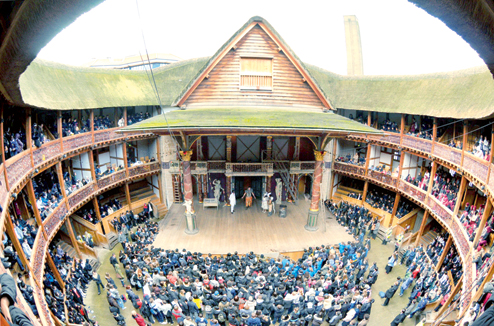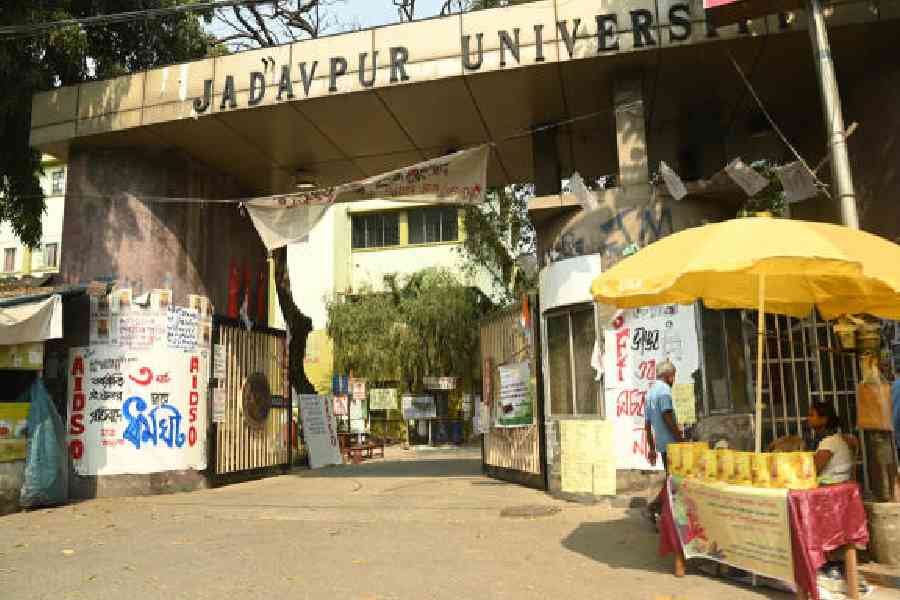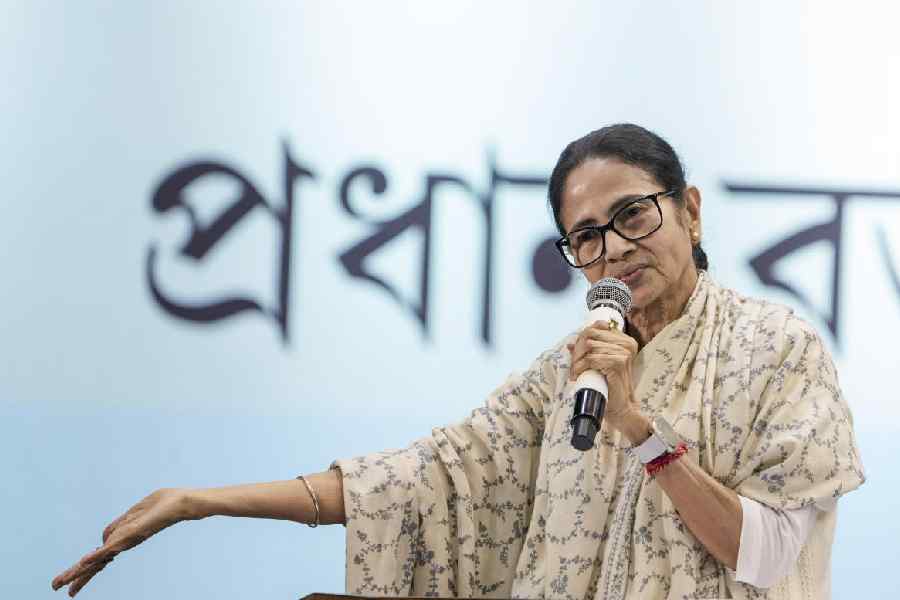 |
| The thrust stage of Globe Theatre in London |
A cultural centre named after Tagore and boasting a state-of-the-art “thrust” auditorium will come up at Jadavpur University, one of the eight venues selected by the Centre from among 70-odd applications for culture hubs dedicated to the poet.
“The Rs 15-crore Tagore Cultural Centre will come up on JU’s third campus, across the road from the main campus,” said professor Ananda Lal of the university’s department of English.
“The centre will include a state-of-the-art, international-standard ‘thrust’ auditorium, which Calcutta does not yet possess, and all the latest technology for performing arts. It will house a Tagore repertory dedicated to the works of Tagore and will also encourage selected performances from elsewhere.”
The inception of a Tagore centre dates back to 2010, when the then Union culture secretary, Jawhar Sircar, had asked Lal, in charge of the UGC-funded Rabindranath Studies Centre at JU, during a visit to the campus for ideas on celebrations to mark 150 years of Tagore.
JU was quick to send a proposal but the initial plan for a study and research centre was shelved after the culture ministry floated another scheme — titled the Tagore Cultural Complex scheme — with a set of guidelines related to performing arts.
“Performing arts was a showpiece in the original proposal we had sent to the culture ministry. So we resubmitted our proposal to suit what they wanted,” explained Lal, who is project head for the Tagore Cultural Centre.
The centrepiece of the complex will be the main auditorium which will boast a thrust stage — a stage that will extend beyond the proscenium arch and into the auditorium, with people sitting on three sides. A thrust stage provides exciting visual opportunities and a dynamic performance space, as its size can be altered to suit the needs of a production.
“Tagore had thought in terms of a stage jutting out into the audience,” said Lal, who specialises in theatre and Tagore.
Ruing the state of auditoriums in the city, the professor said: “We have some large auditoriums, like GD Birla Sabhagar, Kala Mandir and Rabindra Sadan, for performing arts. But the structures are old and obsolete. All of them are proscenium arch (a picture frame box-like structure with the audience facing the stage). So are 99 per cent of the auditoriums in India. Today that’s obsolete. Theatre has become a lot more intimate with the audience. It’s a shared experience, which the proscenium does not allow.”
The Olivier Theatre and Shakespeare’s Globe Theatre in London, Prithvi Theatre in Mumbai and the Rangashankara in Bangalore have thrust stages. “But unlike Prithvi that has 200 seats and Rangashankara which has 300 seats, our main auditorium will seat 700. We want to be the first choice for international theatre companies to stage plays in India. Such groups have skipped Calcutta several times because we do not have a proper venue.”
Alongside the main stage, there will be a studio theatre with small and flexible seating and an outdoor amphitheatre that will occupy an acre.
“In Santiniketan, Tagore went open air while directing plays. Also, he liked to work within the audience. So all these three auditoriums would be suitable for Tagore and connected with his vision,” said Lal.
The idea of a cultural centre JU is going to have has been in the professor’s mind for 30 years. “Essentially, I have always felt that we in Bengal have not capitalised on his enormous education or fame, particularly from the perspective of performing arts. We must have a Tagore repertory somewhat analogous to the Royal Shakespeare Company. When someone goes to London, they say ‘This is Shakespeare’s homeland, where can we see a Shakespeare play?’ So this has tourist potential, too. Similarly, when someone visits Calcutta and wants to see something by Tagore, we have to hum and haw and look the other way. Why should this have to be?”
Besides the Tagore repertory of around 15 performers, the university will allow other groups to use the theatre. “A university has a duty towards its community which is not just students and teachers. It has to have an intimate link with the surroundings outside. This is an outreach project,” he said.
The NSD has been given the responsibility to implement the project.
“If all goes well, construction should begin in October. Hopefully the centre will be ready in a year,” Lal said.











